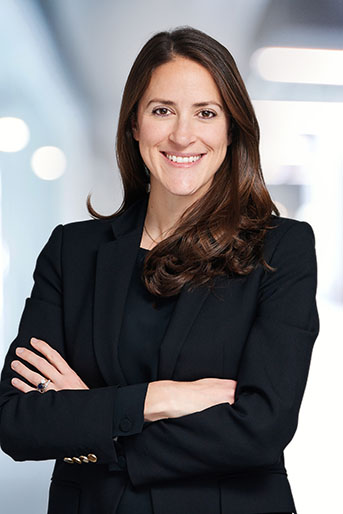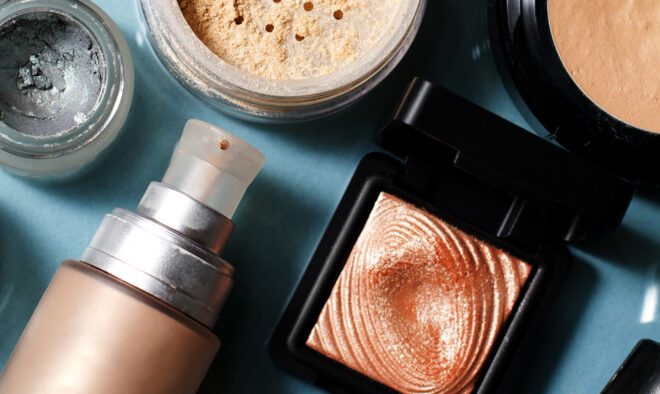The Complexion of Cosmetics and Skin Care Industry Continues to Evolve Through the Pandemic

In this article we take a look at two key beauty industry categories, cosmetics and skin care, and the various factors contributing to notable shifts that are changing the face of the market.
Cosmetics and skin care have, for years, been dominated by a group of well-known global brands offered primarily within the department store environment and operated by powerful corporations including P&G, Unilever, L’Oréal and others.
In recent years, vertical specific players such as Sephora, Ulta Beauty, and others have captured notable market share away from department and other stores through a focused retail presence as well as a strategy focused on competitive pricing and wide selection across entry, mid- and high-end offerings. Additionally, the retail environments and experiences they have created via their execution of extensions at other larger retailer locations as well as their compelling presence online, have served to shape evolving customer expectations for their cosmetics and skin care purchase interactions. Case in point, Ulta Beauty at Target debuted in August 2021 in more than 100 Target stores nationwide and online with more than 50 prestige brands. These shops-in-shops feature specialized displays, discovery areas and seasonal offerings located adjacent to Target’s existing beauty sections. The experience is also being extended via target.com and Target’s app as well. Elsewhere, and not unexpectedly, Beauty, health and personal care on Amazon increased 45 percent year-over-year in 2020 with $23 billion in sales, according to media agency, Stella Rising. Overall, Amazon currently captures approximately one-third of all beauty bought online.
As early as five or six years ahead of the arrival of the pandemic in the U.S., a number of direct-to-consumer (DTC) cosmetics brands began gaining notable traction. The majority of these were, and continue to be, marketed and sold online. With a focus on quality over price competitiveness and delivering a new type of personalized experience that distinguished them from store brands, consumer adoption began to show promise. Among this new breed of cosmetics at the time were innovative, entrepreneur-backed brands. This included the likes of Kylie Cosmetics — leveraging the hundreds of millions of followers that Kylie Jenner cultivated on reality TV and via her online presence, Drunk Elephant — which has successfully relied upon unprecedented word of mouth to generate awareness, trial and loyalty, and Glossier — which has innovatively opened pop-up stores in major cities around the world on a seasonal, yet unexpected, basis. This approach has created a buzz, anticipation and an ability to attract both loyal and new followers and interact with them in a controlled live environment without the costly investment associated with full-time brick and mortar locations.
Seeing the potential of these companies, some longstanding brands and manufacturers have sought out and acquired promising, existing DTC businesses rather than choosing a “created here” approach to accessing that market and the long runway which accompanies such an undertaking. Among the other innovative approaches pursued to gain DTC traction, L’Oréal has focused on its own incubator to gather and provide insights from people’s interactions with personalized makeup, devices and tailored skin care offerings. Prior to COVID, in 2019, L’Oréal online sales grew 52% year-over-year and now represent more than 16% of total sales. The company has also been a leader in implementing new technologies including augmented and virtual reality as well as artificial intelligence — via its acquisition of AR beauty tech start up, Modiface, in 2018 — to engage consumers with its product offerings. Others in the industry have followed suit, enabling customers to actually see how products will look on their very own faces before committing to an online purchase.
With department and specialty cosmetics stores closed for multiple months and then encumbered by factors including mask and capacity restrictions, COVID-19 accelerated this movement of disruptive innovation. Deprived of their ability to visit stores for makeovers, consumers engaged more with subscription-based, “curated” brands such as Ipsy’s Glam Bag and BirchBox, which are tailored to end-user preferences and could be sent directly to their homes. These offerings have proven highly popular during the pandemic, further illustrating a new mindset among many cosmetics consumers regarding the type of relationship they now want to have with the products they buy and the companies that create them. The stickiness of these subscriptions is also delivering the potential for greater lifetime customer value and predictable revenue for these companies.
“Even prior to the pandemic, data collected on women’s preferred destinations for their cosmetics purchases demonstrated the mounting traction online marketers and their brands had already achieved in the overall market. The pandemic has only served to accelerate this trend.”
Interestingly, during recessionary periods prior to COVID-19, we have typically observed what is known as a “lipstick effect,” where cosmetics does well because even though disposable income drops, cosmetics and skincare are relatively affordable. That has not been the case during the pandemic, however, particularly during the lockdown months of 2020. With more people staying and working at home and wearing masks while out, makeup sales overall were very negatively impacted.
Skin care sales, however, accelerated in large part due to both the impact to skin of wearing masks across the face, and the heavy use of hand sanitizers and soaps. To some degree, and understandably so, it has been a way for people to pamper and feel better about themselves during a timeframe psychologists and others across the medical field have described as troubling for consumers of all ages, income levels, ethnicities and geographies.
With global sales of $483 billion in 2020 and an annual growth rate of 4.75%, total revenue in the beauty industry is expected to exceed $716 billion by the year 2025, according to Common Thread Collective. North America accounts for 24% of industry market share with cosmetics and skin care comprising 14.6% and 23.7% of U.S. beauty market share respectively. In the U.S., Cosmetics and Skin Care account for 14.6% and 23.7%, respectively, of overall beauty care revenue, based on data from SEO specialists, Terakeet.
One thing the pandemic has not altered has been the mounting, pre-COVID trend of beauty care customers being more and more focused on the quality, suitability, and effectiveness of the products they select and the ingredients they apply to their particular skin type. Many online and some offline retailers have increasingly shifted to, and gained traction by, communicating these and other “Clean Beauty” attributes of their offerings as a differentiator rather than competing on price. With the global market for natural cosmetics projected to reach $54.5 billion by 2027, the growing impact of clean, natural and organic cosmetics on the market is clear. According to eMarketer, 64% of those who buy beauty care products and value quality most, are also more likely to shop directly from a cosmetic brand’s online site than from a big box retailer such as Target or Walmart, which more typically tend to attract shoppers based largely on price. Establishing this perceived difference in quality as the brand-differentiator can make or break an ecommerce beauty brand.
A Shifting Dialogue
Along with the increased interest in beauty products boasting quality, non-toxic ingredients, consumers — particularly those in the Millennial and Gen Z age ranges — are focused on the social responsibility initiatives that their preferred brands support. For these customers, makeup containing organic sun protection ingredients may not be enough to drive purchase and loyalty unless the brand also has a demonstrated commitment to skin cancer prevention education, treatment or other causes consistent with a customer’s personal beliefs. As a result, clearly communicating this in labeling as well as via marketing efforts directed to both buyers and those who influence them is critical.
Why the focus on those who influence? For starters, compared to others, consumers of beauty products are far ahead of the pack in finding out about new brands or products via recommendations, social media commentary, expert blogger posts and celebrity endorsements. In fact, almost 1 in 2 say that they are motivated to purchase products online based on reviews from other consumers, according to data from GWI research. Additionally, SEO firm, Terakeet, reports that a comparison of informational vs transactional searches online illustrates that the top six market shareholders for informational beauty care searches are publications, while only three of the top ten are beauty retailers themselves. This, according to DigitalSurgeons, includes legacy beauty brands whose beauty video content delivers only 3% of total views, as compared to “vloggers” which deliver 97% of all total beauty video views.
The trend of more brands servicing diversity, focusing in on the needs of end users of color, also has continued through the COVID period. Shades tailored to these audiences have been very well received and remained in high demand, particularly via DTC channels. Fenty Beauty by Rhianna with its “Beauty for All” positioning is perhaps the most well known of these, offering 40 distinct shades and boasting social media messaging that has clearly resonated with the target audience. In a Time magazine interview conducted shortly after the brand launched, Rhianna put it this way, “I never could have anticipated the emotional connection that women are having with the products and the brand as a whole.” Other brands such as Mented Cosmetics and Pat McGrath Labs are building solid momentum as well.
Hilco is very active in the beauty space, and our work has included diversity-focused brand efforts both before and during the COVID period. In 2019, based on its successful auction sale of Johnson Publishing’s historic photography and media archive for $30 million, Hilco Streambank – which specializes in intellectual property advisory and the valuation and sale of intangible assets — was retained to market and sell the Fashion Fair beauty brand. Once the largest Black-owned beauty company in the world, Fashion Fair had ceased operating several years prior. Following a spirited auction, an entity led by Desiree Rogers and Cheryl Mayberry McKissack, the former CEO and COO, respectively, of Johnson Publishing purchasing the Fashion Fair intellectual property assets for $1.85 million. Additionally, late this summer, Hilco Streambank began the process of marketing for sale certain rights of the licensee, Johnson Publishing Company, to numerous trademarks and domain names containing “Ebony” and “Ebone” for commercial use in the fields of fashion, cosmetics, and personal care.
In 2018, prior to the efforts described above, Hilco Streambank was engaged by a joint venture — which had purchased substantially all of the Bon-Ton department store brand assets out of bankruptcy — to market and sell the company’s intellectual property assets. Beyond simply leading the auction to what was a highly successful outcome, we leveraged our deep industry knowledge to pair L’Oréal with the high bidder, enabling the legendary cosmetics brand to acquire and leverage a valuable database of L’Oréal customers that was owned and maintained directly by Bon-Ton. This effort assisted L’Oréal in its efforts to build its burgeoning direct-to-consumer business.
Considerations
While the beauty and personal care industry will remain strong globally, we expect that the cosmetics and skincare verticals, specifically, will experience among the greatest revenue growth in the U.S. in 2022.
While there have been no notable acquisitions by large companies in the space during the protracted pandemic period, we have seen some established players buying early stage/niche startup companies and Revlon has been marketing some of its lower-performing brands. This overall malaise in the industry is not surprising as most would-be buyers wait out the uncertainty and focus on driving their businesses forward via more robust DTC, digital and omnichannel efforts.
Higher logistics costs and wages, due to worker shortages, continue to impact the industry directly as well as those businesses along the supply chain. For now, we advise that lenders continue to monitor the impact from the pandemic on businesses within their portfolios, particularly given the continuing concern regarding the Delta and other Coronavirus variants and that lingering impact on foot traffic at brick-and-mortar stores. As pointed out earlier, though brick-and-mortar stores still account for a significant portion of overall sales in cosmetics and skin care, e-commerce sales have been notably increasing. A robust digital infrastructure will be imperative for beauty care retailers moving ahead and lenders should remain well informed as to both the state of those capabilities among their portfolio businesses as well as any terms and renewal requirements pertaining to the ownership, control and use of that IP and how those would likely impact NOLV in a liquidation.
Like so many other industries right now, there is significant pressure on cosmetics and skin care margins and lenders should keep an eye on this performance as a decline in margins normally suggests a potentially lower recovery in the event of a liquidation sale. Additionally, companies turn over a portion of product each year as they continually update for fashion colors and other trends. This can impact the level of discontinued product, which can impact recovery values. Hilco recommends lenders monitor discontinued and slow-moving products closely to ensure their portfolio companies remain proactive in selling through these inventories and adequate reserves are in place.
While we have not discussed the perfume/fragrance market specifically here, we have referenced the power of celebrity brands, so it is worth noting that many fragrance manufacturers and wholesalers have established license agreements for celebrity fragrances. While these brands often perform well when the celebrity is “hot,” when sales for these brands do slow, it tends to happen quickly. Hilco recommends lenders monitor all new fragrance launches and existing products with strong celebrity links, to ensure they are meeting planned sales. The licensing agreements associated with these relationships normally include certain restrictive terms, including but not limited to, channels of distribution as well as royalty fees and minimum annual royalty payment amounts. Lenders and legal counsel should understand any restrictive terms and confirm that assumptions considered in projected NOLVs are reasonable in the current market.
“Hilco recommends lenders monitor all new fragrance launches and existing products with strong celebrity links, to ensure they are meeting planned sales.”
Hilco Valuation Services and Hilco Streambank can assist your businesses or a business in your portfolio in better understanding and addressing considerations pertaining to the strategic disposition, acquisition and maintenance of both tangible and intangible assets across the beauty industry. Whether you are simply seeking some added perspective or require counsel or assistance with a current undertaking, we encourage you to reach out to us during this complex period for the industry. We are here to help!





